Travelogue Mobile App
For my Interaction Design Studio at Carnegie Mellon University, I worked to explore and address issues mobile workers had in current mobile app solutions. Specifically, we looked at mobile workers whose job it is to travel to unfamiliar locations. How do they find services? How do they decide where to eat? How can they learn more about these areas?
Over six weeks, we researched and designed such a solution, which we have dubbed Travelogue. Travelogue allows users to search for destinations between their planned stops by choosing how far how out of the way a user wishes to go. Full details are below.
Team:
Kaushal Agrawal and Rebecca Gulotta, both graduate students in human-computer interaction at CMU
Duration:
Six weeks
Skills used:
user interviews, personas, scenarios, wireframes, user evaluations, Adobe Photoshop, Adobe Illustrator, OmniGraffle
Background research
Mobile workers represent a huge part of the workforce—more than 91% of workers report doing at least some work outside of the office, according to a report by Nemertes Research. As mobile phone and tablet use becomes more common in the professional setting, there are myriad opportunities to reach this user base.
A competitive analysis of several iPhone apps designed to locate services and food found room for growth: no single app provides for a variable set of place types and all apps seem focused on a single destination. My team decided to focus on improving the offerings for searching between destinations.
User research
We conducted six interviews with mobile workers across the United States, in order to better understand the problems they encountered. They represented a wide age range (21–54) and various occupations (educational consultant, journalist, letter carrier, wildlife monitor, and IT consultant). Among our findings:
"Mobile worker" is not a self-applied term.
Most of the interviewees did not consider themselves "mobile workers" as they thought of the term, indicating that, if we marketed this app, this is probably not a good term to use.
Current apps focus on providing just one service, and there's no one-stop shop for work on the go.
Participants disliked the clunky, cumbersome feel of many apps—they didn't want lots of clicks or taps to reach the desired information.
Resources for day-planning vary widely among occupations
Some of our participants relied solely on face-to-face advice for planning their trips. Others used a variety of apps or web services.
Schedules change frequently and unexpectedly
Nearly every participant mentioned the difficulty in replanning when things go wrong. Our app should gracefully accommodate such changes to minimize confusion.
Personas
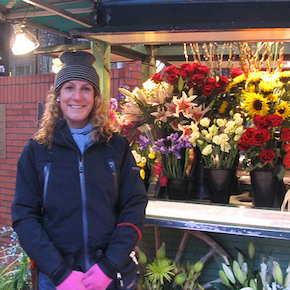
Maxine works for a flower delivery shop in New York. She's been working at the flower shop for about six years, delivering flowers for most of that time. Her aging boss plans to retire soon, and she hopes to take over the shop. She recently started taking night classes in business at CUNY Hunter.
Maxine's daily routine involves planning her flower delivery route in the morning, and then spending her day out making deliveries.
Sometimes traffic is unusually good, and she runs ahead of schedule. She likes to use this time to finish some homework, but often she finds herself in an unfamiliar neighborhood and isn't sure where to find a place that has wifi or coffee.
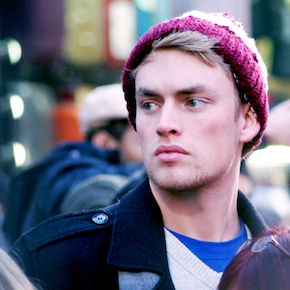
Eric is a recent college graduate, having graduated three months ago after receiving a degree in Drama from UCLA. He lives with his parents in the suburbs, about 30 miles from Los Angeles.
As a young graduate, Eric is avidly pursuing acting auditions and attending dance and acting classes to hone his skills. As a result, he frequently drives to different locations in Los Angeles to go to auditions and his classes.
Because the auditions happen in a variety of locations around L.A., Eric relies on his phone to help him navigate to new, unfamiliar places. Additionally, Eric uses his phone to help him find healthy places to eat while waiting for auditions or his classes to start.
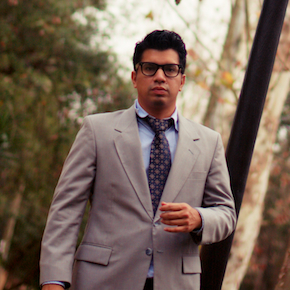
David is an experienced business consultant who has worked in Asia, Europe and across the United States. The nature of his job requires him to travel frequently to different places around the world. He loves traveling and discovering new places, and looks forward to his business trips.
As a result of his job, David spends a great deal of time in unfamiliar locations. When traveling, he uses the commute time to read on his Kindle. But once he's arrived at his destination, he loves to explore, meet local people, and find interesting restaurants.
He uses his smartphone and computer to get recommendations about where to go and to make sure he sticks to his work schedule.Scenarios
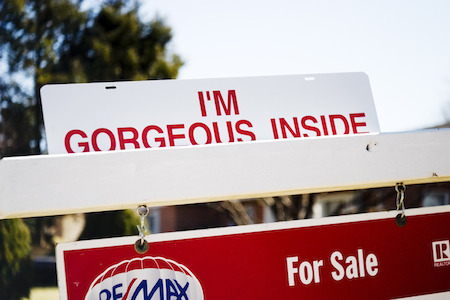
Hugh Galbo, 43, is a realtor in Albuquerque, New Mexico. Today he has 3 houses to show across the city. His first showing goes very well, and his potential buyers are ready to discuss their terms. But because Hugh is fairly new to Albuquerque, he realizes he doesn't know where to take his buyers to have this discussion.
Although Hugh has a smart phone, he worries that it might seem unprofessional to his customers to look for a site in front of them. Hugh pretends he has a spot in mind, and instructs his potential buyers to follow him in their car. While driving, he uses the Yelp app to find the closest coffee shop, and heads there.
He realizes he should have planned such meeting places before leaving the office. Using Travelogue, Hugh would have been able to enter his itinerary in advance and later have access to a list of suggested places based on his origin, current location, and next appointment.
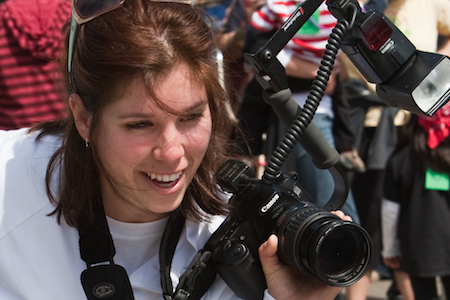
Emily is a freelance photographer who often shoots photos of events for the Pittsburgh Post Gazette. Because of the nature of her work, her daily schedule is often a mix of scheduled events and spur of the moment unscheduled events.
One day last week, Emily was scheduled to photograph three events in a small town 20 miles north of Pittsburgh. Unfortunately, when Emily arrived at her first appointment, her boss called to say that it had been moved to another location. Already late, Emily had to change her plans and drive to the new location.
Because she had not planned to be at this new location, Emily was unaware of what coffee shops and restaurants were in the area and had trouble finding a place to answer emails and send photos to her editor. Using Travelogue, Emily could have amended her schedule on the fly and found local shops in between her destinations.
Sketched Wireframes
Below is a sample of our initial wireframes, developed by Rebecca using Balsamiq. The first wireframe shows the main page of the application. On this page users would be able to enter their itinerary and plan a trip. The second wireframe presents users with a text view of their itinerary and provides them with the option of viewing this itinerary as a map. The third wireframe shows a map view of nearby services. The fourth wireframe is a list of options for users in a particular area.
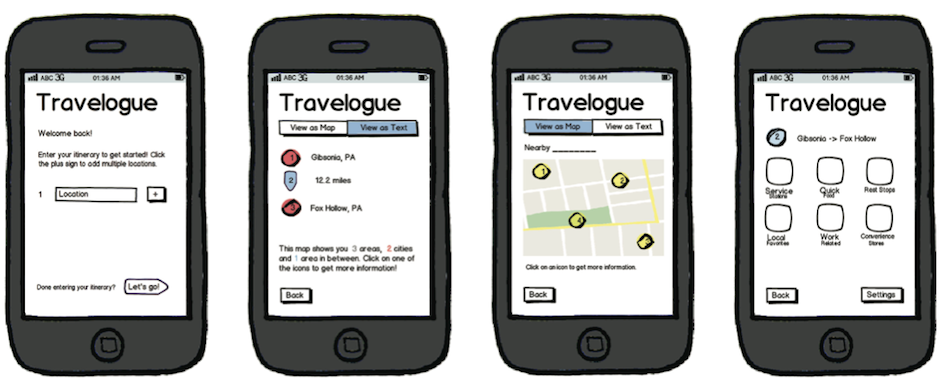
Revised wireframes
Based on a round of user evaluation, I iterated on the Balsamiq wireframes to create the following wireframes using OmniGraffle. The most major changes involved rejecting the destination vs. in-between destinations distinction in favor of only the in-between option, reducing the number of taps necessary to reach information. We also added a notion of personal settings.
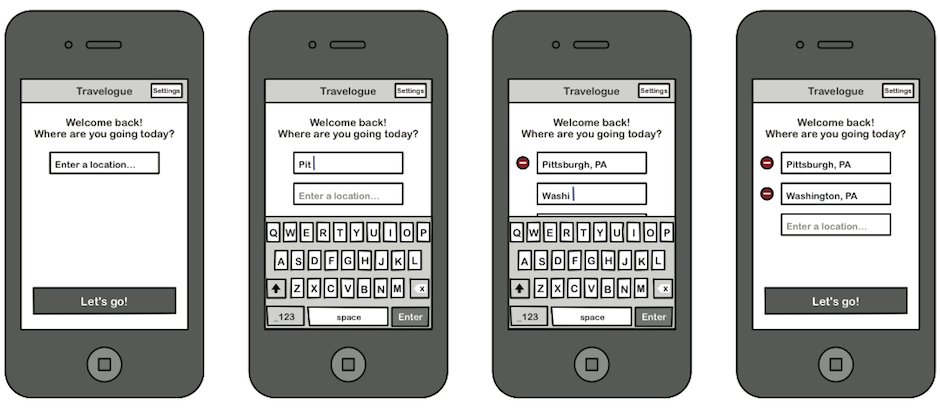
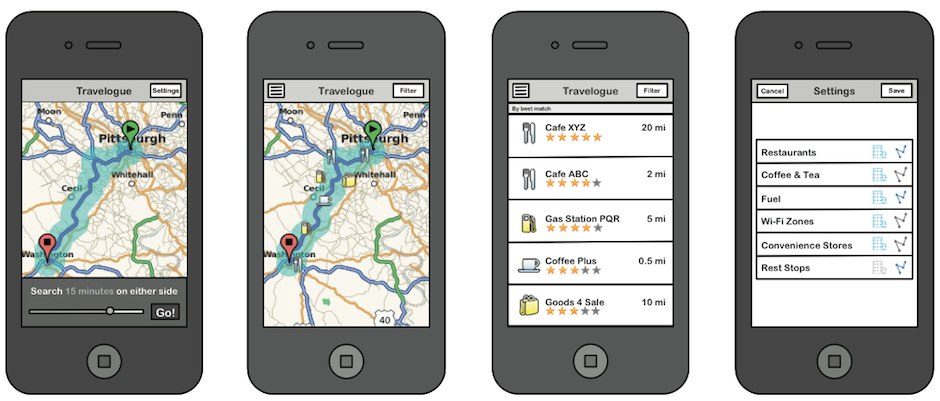
Initial mockups
We furthered iterated on our wireframes to create higher fidelity mockups in Photoshop and OmniGraffle. We also edited the navigation flow slightly by adding a tab bar for quick access to past trips and app-wide settings.
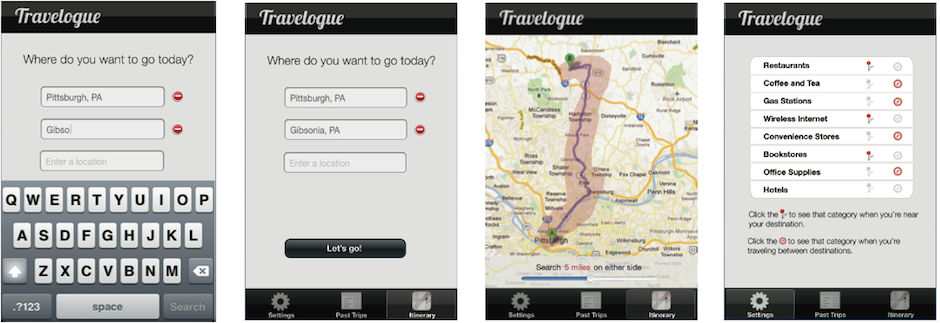
Final design
Our final design combined several weeks of feedback with some general polishing to produce the following final app mockups.
